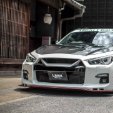Cost Of Getting A Turbo Hi-flowed
Announcements
-
Similar Content
-
Latest Posts
-
@GTSBoy @MBS206 I just did some research and watched some videos. I think I know what you mean now. If I can't reach the bolt when the wheels are on, Is it enough if I take off the wheel and jack it up by the lower control arm to add some load instead?
-
The bloke who built them was having a pull
-
Possibly why my bushing was creaking again because the wrong preload was applied?
-
If I'm using a 4 post hoist, won't I need blocks on all 4 wheels so it applies pressure evenly? I'm having a hard time visualising this







Recommended Posts
Create an account or sign in to comment
You need to be a member in order to leave a comment
Create an account
Sign up for a new account in our community. It's easy!
Register a new accountSign in
Already have an account? Sign in here.
Sign In Now